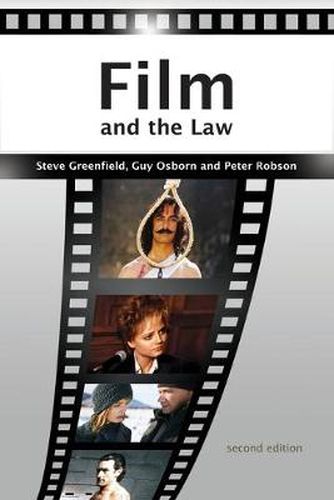Readings Newsletter
Become a Readings Member to make your shopping experience even easier.
Sign in or sign up for free!
You’re not far away from qualifying for FREE standard shipping within Australia
You’ve qualified for FREE standard shipping within Australia
The cart is loading…






Described by Richard Sherwin of New York Law School as the law and film movement’s ‘founding text’, this text is a second, heavily revised and improved edition of the original Film and the Law (Cavendish Publishing, 2001). The book is distinctive in a number of ways: it is unique as a sustained book-length exposition on law and film by law scholars; it is distinctive within law and film scholarship in its attempt to plot the parameters of a distinctive genre of law films; its examination of law in film as place and space offers a new way out of the law film genre problem, and also offers an examination of representations of an aspect of legal practice, and legal institutions, that have not been addressed by other scholars. It is original in its contribution to work within the wider parameters of law and popular culture and offers a sustained challenge to traditional legal scholarship, amply demonstrating the practical and the pedagogic, as well as the moral and political significance of popular cultural representations of law.
The book is a valuable teaching and learning resource, and is the first in the field to serve as a basic guidebook for students of law and film.
$9.00 standard shipping within Australia
FREE standard shipping within Australia for orders over $100.00
Express & International shipping calculated at checkout
Described by Richard Sherwin of New York Law School as the law and film movement’s ‘founding text’, this text is a second, heavily revised and improved edition of the original Film and the Law (Cavendish Publishing, 2001). The book is distinctive in a number of ways: it is unique as a sustained book-length exposition on law and film by law scholars; it is distinctive within law and film scholarship in its attempt to plot the parameters of a distinctive genre of law films; its examination of law in film as place and space offers a new way out of the law film genre problem, and also offers an examination of representations of an aspect of legal practice, and legal institutions, that have not been addressed by other scholars. It is original in its contribution to work within the wider parameters of law and popular culture and offers a sustained challenge to traditional legal scholarship, amply demonstrating the practical and the pedagogic, as well as the moral and political significance of popular cultural representations of law.
The book is a valuable teaching and learning resource, and is the first in the field to serve as a basic guidebook for students of law and film.